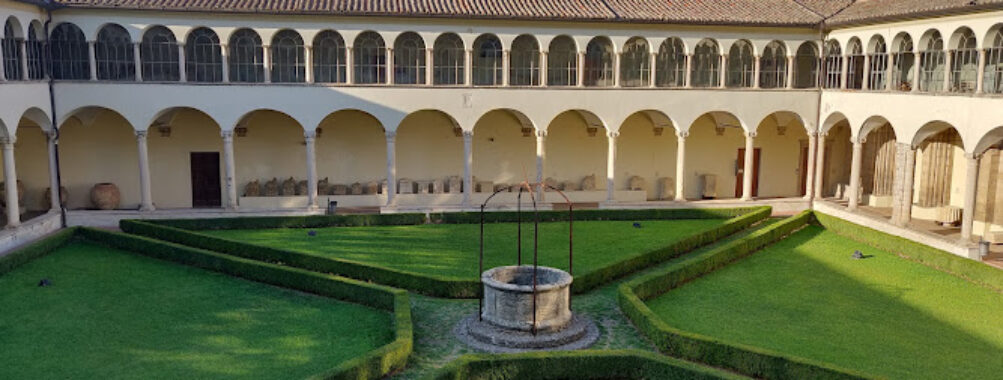
National Archaeological Museum of Umbria
Table of Contents
Description
The National Archaeological Museum of Umbria in Perugia is one of those places that manages to feel both grand and intimate at the same time. Housed inside the former Dominican convent of San Domenico, a 13th-century complex with stately cloisters and vaulted ceilings, the museum tells the story of Umbria’s past through the artifacts of the people who once lived here. From prehistoric tools to the refined artistry of the Etruscans and the Romans, the collection spans thousands of years of history. It’s not just rows of dusty objects either — many of the displays are thoughtfully curated, giving you a sense of how people lived, what they believed, and how their cultures intertwined.
Visitors often comment on how peaceful the atmosphere is compared to larger, busier museums in Italy. You can actually slow down, take your time, and really look at things without being jostled in a crowd. That said, the museum isn’t perfect — some sections can feel a little dated, and there are moments when you wish there was more English signage. But the trade-off is that you get a genuine, less commercialized museum experience. It’s the sort of place where you might stumble across a beautifully carved Etruscan urn and feel like you’ve discovered it yourself.
And personally, I think that’s the charm. I remember walking through the cloister on a warm afternoon and being struck by how the sunlight hit the old stone walls, making the whole place feel timeless. It’s not just a museum; it’s a building that has lived through centuries, and you feel that weight of history as you wander its halls.
Key Features
- Located in the former Dominican convent of San Domenico, dating back to the 13th century
- Extensive prehistoric section with artifacts from Paleolithic to Bronze Age settlements
- Rich Etruscan and Umbrian collections, including funerary objects, inscriptions, and daily-life items
- Roman-era artifacts such as mosaics, sculptures, and coins
- Peaceful cloister and architectural details that enhance the museum experience
- Family-friendly environment with accessibility features like wheelchair access and restrooms
- Affordable admission fee compared to many larger Italian museums
Best Time to Visit
If you’re planning a trip, weekdays in the late morning or early afternoon tend to be the sweet spot. The museum doesn’t usually get overwhelmed with tourists, but weekends can bring in more families and school groups. Spring and autumn are particularly pleasant times to visit Perugia in general — the weather is mild, and you can combine your museum trip with a leisurely stroll through the city’s historic streets. I’d avoid the hottest days of August if possible; while the building is thick-walled and cooler than outside, it can still feel a little stuffy. On rainy days, though, this museum is an absolute lifesaver. There’s something cozy about exploring ancient artifacts while the rain patters against centuries-old stone outside.
How to Get There
The museum sits just outside the historic Etruscan walls of Perugia, along Corso Cavour, so it’s easily reachable on foot if you’re already in the city center. If you’re coming from the train station, you can hop on a local bus that drops you nearby — it’s a short ride and saves you the uphill walk. Driving is possible, but keep in mind that parking in Perugia’s historic core is limited and often paid street parking only. Personally, I’d recommend walking if you can. The approach to the museum takes you through some of the city’s most atmospheric streets, and that’s part of the fun.
Tips for Visiting
Here are a few things I’ve learned (sometimes the hard way) that might make your visit smoother:
- Plan at least 1–2 hours: The museum isn’t enormous, but you’ll want time to linger over the Etruscan section in particular.
- Bring a bit of patience: Some labels are only in Italian, so a translation app or guidebook can be really handy.
- Check accessibility: If you or someone in your group needs wheelchair access, the museum is well equipped with ramps, accessible restrooms, and entrances.
- Skip the lunch rush: There’s no restaurant inside, so plan to eat before or after. Luckily, Perugia has plenty of trattorias and cafés within walking distance.
- Traveling with kids? This is actually a great spot for families. The objects are varied enough to keep children’s attention, and the open cloister gives them space to move around.
- Photography: Always double-check the current rules, but usually non-flash photography is allowed. It’s worth snapping a few shots, especially of the cloister.
- Combine it with other sights: The museum pairs well with a visit to the Basilica of San Domenico nearby, so you can make a half-day itinerary without rushing.
And one last thought — don’t rush through. It’s tempting to skim when you’re traveling and trying to see everything, but this museum rewards slowing down. Let yourself imagine the people who once held the objects you’re looking at. That’s when history feels alive, and that’s when the National Archaeological Museum of Umbria really shines.
Location
Places to Stay Near National Archaeological Museum of Umbria
Find and Book a Tour
Explore More Travel Guides
No reviews found! Be the first to review!